11–14 chemistry: ideas, resources and misconceptions to look out for
How can it be that we are made of the same stuff as stars? It can be hard to conceive that everything around us, and within us, is made up of just 100 or so elements. The elements are fundamental to everything we do as chemists, and their symbols act as our common international language.
What do students need to know about elements and compounds?
- An element is a substance that cannot be chemically decomposed into simpler substances.
- An atom is the smallest particle of an element that can take part in chemical reactions.
- A compound is a substance formed from two or more elements chemically joined (bonded) together.
- A compound has a definite chemical composition and hence specific formula.
- A compound has chemical properties different from the properties of the elements it contains.
- Molecules are substances formed when two or more atoms are chemically joined (bonded).
Ideas for the classroom
As science teachers, we are fortunate we can demonstrate key ideas in front of students’ eyes. There’s tacit knowledge about chemical substances students only gain by seeing and touching, so have a box of samples for students to explore.
A useful starting point is to show elements and compounds being formed (see table). Ask students to think about what is present at the start and end of each reaction. For example, sodium doesn’t ‘disappear’ when it reacts with chlorine, it’s incorporated into a compound. And sodium chloride has very different properties to elemental sodium. Similarly, iron is magnetic but iron sulfide is not. Compare and contrast this with the uncombined iron you can extract from breakfast cereal.
A useful starting point is to show elements and compounds being formed. Ask students to think about what is present at the start and end of each reaction. For example, sodium doesn’t ‘disappear’ when it reacts with chlorine, it’s incorporated into a compound. And sodium chloride has very different properties to elemental sodium. Similarly, iron is magnetic but iron sulfide is not. Compare and contrast this with the uncombined iron you can extract from breakfast cereal.
| Demonstration or practical | Principle shown | Ask your class |
|---|---|---|
|
Two elements reacting together to form a compound |
Where are the sodium atoms at the end of the reaction? |
|
|
Dehydration of sucrose (creates a carbon tower) |
A compound reacting and ‘losing’ atoms, leaving a constituent element visible |
Sucrose contains carbon, hydrogen and oxygen atoms. Which element can you observe at the end of the reaction?* Where are the hydrogen and oxygen atoms now? *In reality, oxidation follows the first reaction, complicating matters, but this can be overlooked at this stage. |
|
Two elements reacting together to form a compound, with observably different properties to the original elements |
Why can you separate iron from sulfur before it has reacted, but not afterwards? |
|
|
An unreacted element extracted from a substance |
Why couldn’t you see the iron in the cereal? The iron was extracted using a magnet. Would this have been possible if it had reacted to form a compound with the cereal? |
|
|
A solid–solid reaction between lead nitrate and potassium iodide |
A new substance formed from the reaction between two compounds |
Where did the yellow substance come from? |
|
A new substance formed from the reaction between two compounds |
Where did the yellow substance come from? |
| Demonstration or practical | Principle shown | Ask your class |
|---|---|---|
|
Sodium and chlorine reaction (rsc.li/2LUqm7o) |
Two elements reacting together to form a compound |
Where are the sodium atoms at the end of the reaction? |
|
Dehydration of sucrose (creates a carbon tower) (rsc.li/2vJev15) |
A compound reacting and ‘losing’ atoms, leaving a constituent element visible |
Sucrose contains carbon, hydrogen and oxygen atoms. Which element can you observe at the end of the reaction?* Where are the hydrogen and oxygen atoms now? *In reality, oxidation follows the first reaction, complicating matters, but this can be overlooked at this stage. |
|
Iron and sulfur reaction (rsc.li/2vHlEz4) |
Two elements reacting together to form a compound, with observably different properties to the original elements |
Why can you separate iron from sulfur before it has reacted, but not afterwards? |
|
Extracting iron from breakfast cereal (rsc.li/2OOeYYH) |
An unreacted element extracted from a substance |
Why couldn’t you see the iron in the cereal? The iron was extracted using a magnet. Would this have been possible if it had reacted to form a compound with the cereal? |
|
A solid–solid reaction between lead nitrate and potassium iodide (rsc.li/2nhAUPm) |
A new substance formed from the reaction between two compounds |
Where did the yellow substance come from? |
|
Precipitation of lead iodide (golden rain) (rsc.li/2nfehuM) |
A new substance formed from the reaction between two compounds |
Where did the yellow substance come from? |
Practical activities allow students to make observations (macroscopic). They need to be able to explain observations using ideas about atoms, elements and compounds (sub-microscopic) and chemical symbols (symbolic). Explicitly discuss these three levels of representing chemistry (macroscopic, sub-microscopic and symbolic), which are known as the Johnstone triplet, and how they link together. This helps students build detailed understanding. If students cannot make these links, they will struggle to understand the topic fully, so it’s worth reviewing them repeatedly as you teach the topic.
Practical activities allow students to make observations (macroscopic). They need to be able to explain observations using ideas about atoms, elements and compounds (sub-microscopic) and chemical symbols (symbolic). Explicitly discuss these three levels of representing chemistry (macroscopic, sub-microscopic and symbolic), which are known as the Johnstone triplet (rsc.li/2vHDkdQ), and how they link together. This helps students build detailed understanding. If students cannot make these links, they will struggle to understand the topic fully, so it’s worth reviewing them repeatedly as you teach the topic.
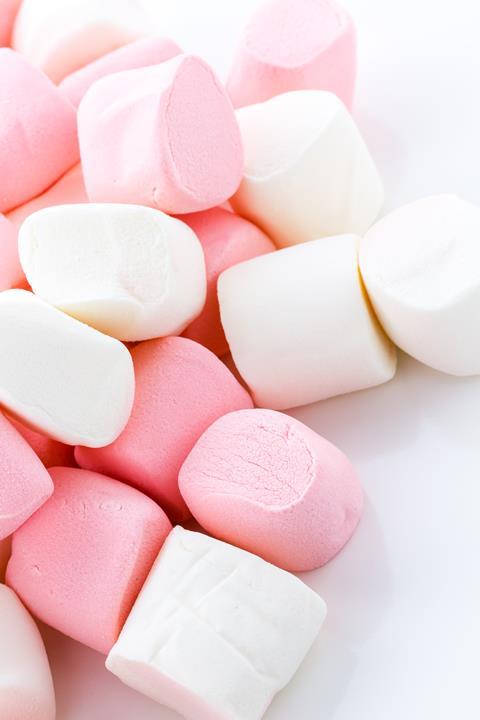
Molecular modelling kits can help students learn how to represent molecules and distinguish between elements and compounds. Save budget and switch commercial modelling kits for things like marshmallows and cocktail sticks. Build example models of different substances, elements and compounds, then give your students a range to try for themselves. Limit the number of marshmallow colours to two to reduce the number of things students need to think about (related to cognitive load). This helps focus them on the underlying concepts.
Molecular modelling kits can help students learn how to represent molecules and distinguish between elements and compounds. Save budget and switch commercial modelling kits for things like marshmallows and cocktail sticks. Build example models of different substances, elements and compounds, then give your students a range to try for themselves. Limit the number of marshmallow colours to two to reduce the number of things students need to think about (related to cognitive load: rsc.li/2KBLTw2). This helps focus them on the underlying concepts.
Present a range of diagrammatic representations of elements and molecules, and ask your students to identify which are elements and which are compounds. Model your own thinking to students, demonstrating how you approach each task and use your knowledge. This can help scaffold students’ own thinking, and can help them develop their metacognition skills.
Present a range of diagrammatic representations of elements and molecules, and ask your students to identify which are elements and which are compounds. Model your own thinking to students, demonstrating how you approach each task and use your knowledge. This can help scaffold students’ own thinking, and can help them develop their metacognition skills (bit.ly/2HDv4Ak).

Marshmallow models activity
Download a worksheet that asks students to build representations of molecules using white and pink marshmallows (word, pdf or ppt), and teacher notes (word, pdf).
Download a worksheet from the Education in Chemistry website for students to build representations of molecules using white and pink marshmallows, with teacher notes: rsc.li/2Ph8yR1
Story-telling enlivens the knowledge students need, and the discovery of the elements provides rich pickings. Discuss the ancient’s ideas of Earth, Fire, Air and Water as the foundations of the material world. Ask students to think about why these ideas may have developed. Explain how phlogiston was the forerunner of oxygen, and enjoy telling students phosphorous was discovered accidently after boiling urine. Pose questions such as: ‘Why do we describe water as a compound? Why is air a mixture? What is fire?’
Story-telling enlivens the knowledge students need, and the discovery of the elements provides rich pickings. Discuss the ancient’s ideas of Earth, Fire, Air and Water as the foundations of the material world. Ask students to think about why these ideas may have developed. Explain how phlogiston was the forerunner of oxygen (rsc.li/2vFwXI3), and enjoy telling students phosphorous was discovered accidently after boiling urine (rsc.li/2LUK5DX). Pose questions such as: ‘Why do we describe water as a compound? Why is air a mixture? What is fire?’
Common misconceptions
A common misconception is that atoms share the properties of the bulk material. Emphasise how, for example, individual copper atoms have no colour, but billions of them joined together make a lustrous red metal. Furthermore, the element symbol (Cu) can actually represent billions of particles in a giant structure, rather than one individual atom.
A common misconception is that atoms share the properties of the bulk material (rsc.li/2KxjYNR). Emphasise how, for example, individual copper atoms have no colour, but billions of them joined together make a lustrous red metal. Furthermore, the element symbol (Cu) can actually represent billions of particles in a giant structure, rather than one individual atom.
Scientific keywords often have different non-scientific meanings, leading to many misconceptions. Literacy has a big impact on students’ achievement in science, so tackle this head-on by explicitly defining and working with new keywords. Use graphic organisers to help students make links between words and concepts, and use low-stakes vocabulary quizzes. The act of quizzing itself aids retention, and familiarity with key language can reduce the cognitive load on working memory. This leaves students with a greater capacity for understanding the important underlying concepts.
Formative assessment
Another good starting point for this topic is to have students learn the names and symbols of the first twenty elements. This can build a student’s confidence and fluency when discussing elements. Chemistry vocabulary tests or memory games are a straightforward way of aiding this memorisation.
Progression to 14–16

Understanding elements and compounds is fundamental to many aspects of more advanced study. The models learnt at ages 11–14 will be extended to include types of bonding and giant lattices. Students will learn the detailed structure of atoms and how elements can be defined in terms of atomic number. The particle model will be extended, and they will appreciate that particles can be atoms, ions or molecules.
Be explicit that the models for ages 11–14 are not the ‘end of the story’ and more complex models will be used at ages 14–16.
Bear in mind, as you teach this topic, that elements and compounds are often represented as molecular gases at this stage, for simplicity. If you want to stretch students, you could get them to sketch molecules in a range of states.
Take-home points
- Elements and compounds are part of a chemist’s ‘language’. Help students develop familiarity with names and symbols.
- Students can struggle to make links between the elements, compounds, and reactions they can observe (macroscopic) and the things they can’t (sub-microscopic or symbolic representations). Make these links explicit, and review them regularly.
- Models can help students make the links between language and concepts, and come in many forms. Model your thinking out-loud when you introduce models.
Downloads
Marshmallow models: slides
PowerPoint, Size 0.14 mbMarshmallow models: worksheet
Word, Size 68.99 kbMarshmallow models: worksheet
PDF, Size 56.9 kbMarshmallow models: teacher notes
Word, Size 69.72 kbMarshmallow models: teacher notes
PDF, Size 59.45 kb




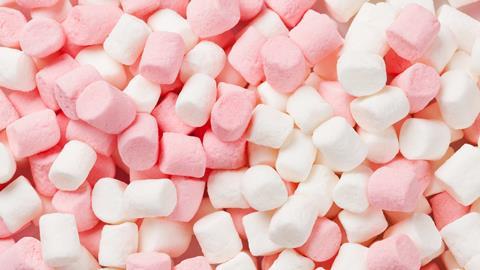

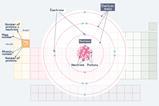
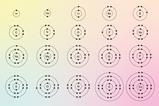
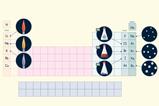






No comments yet